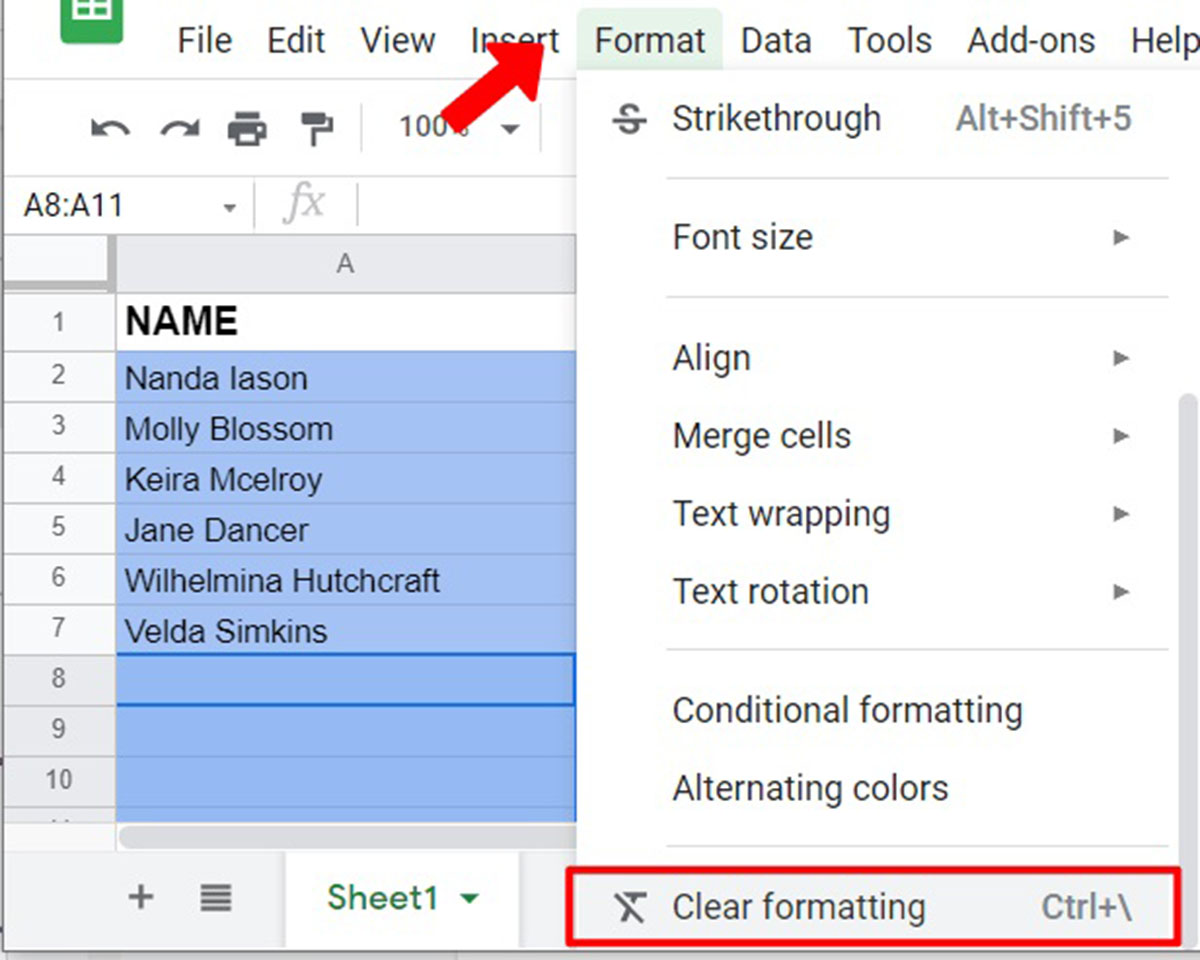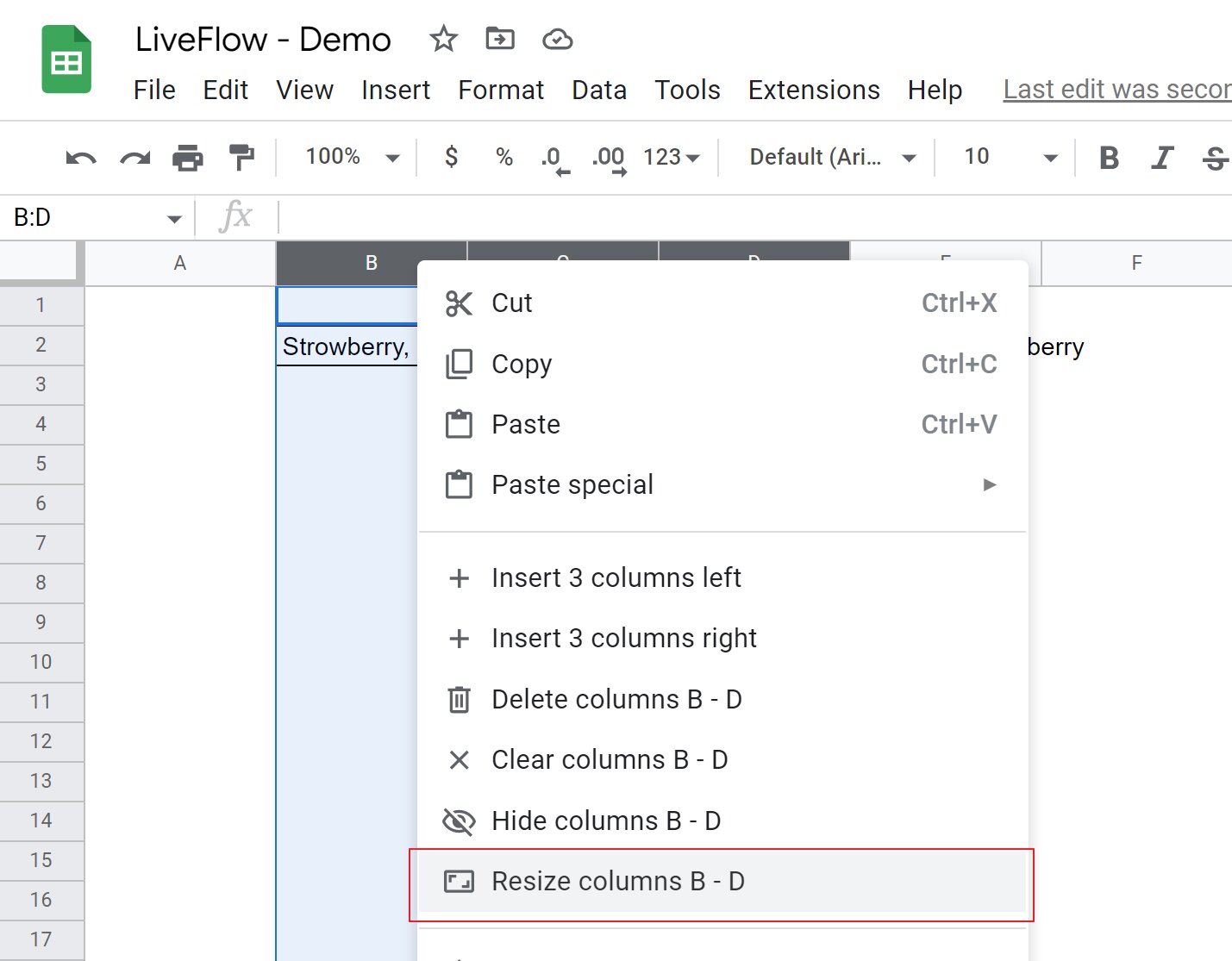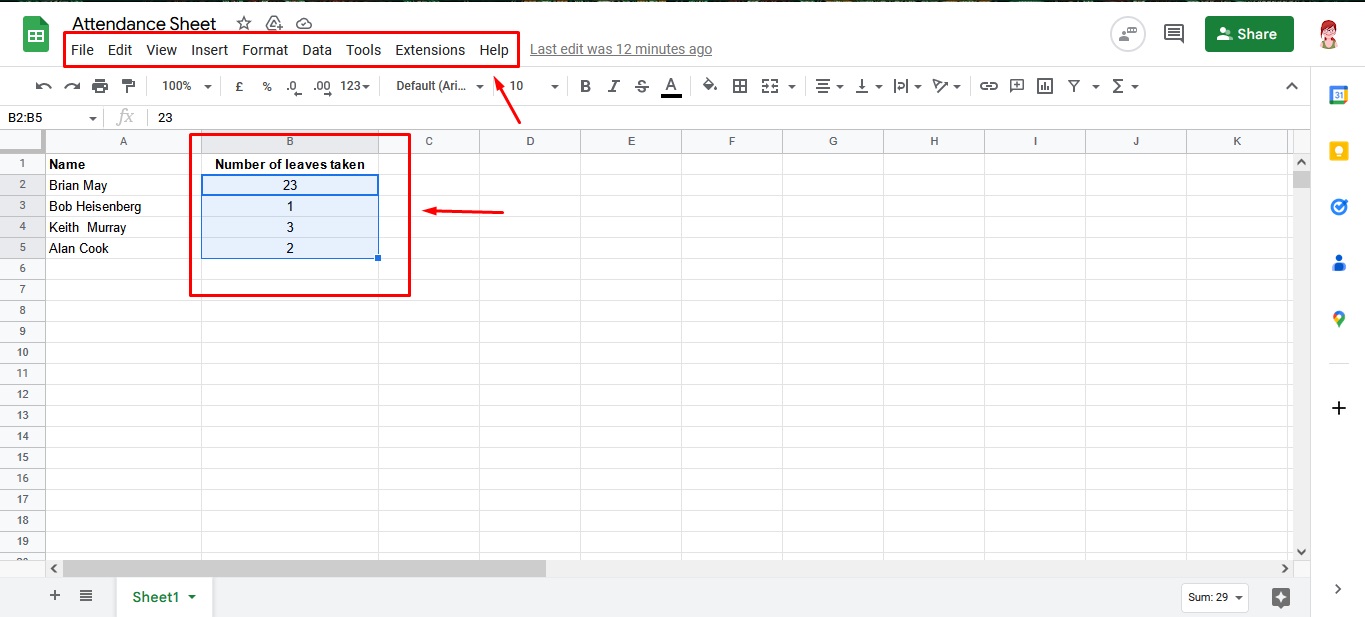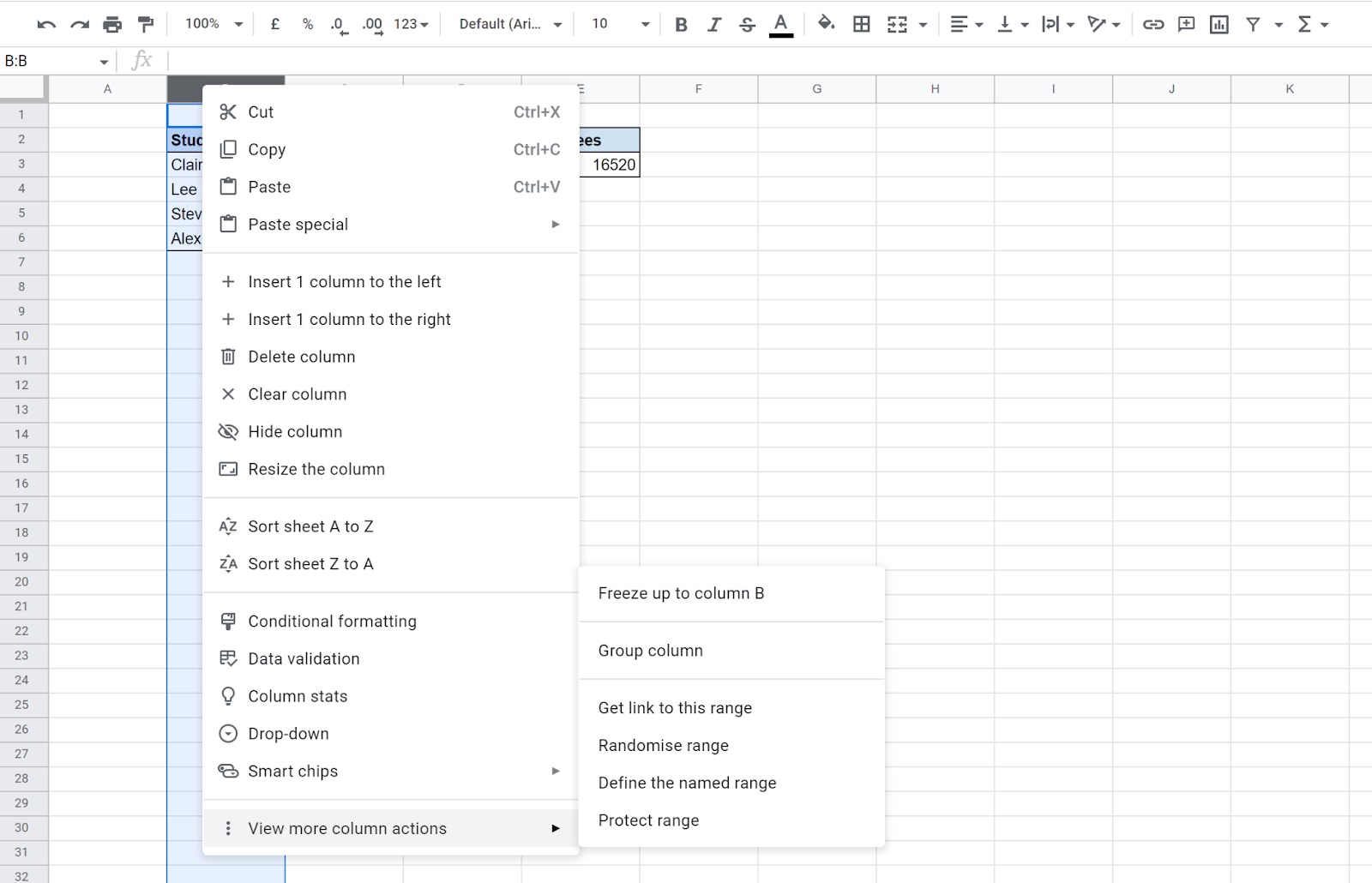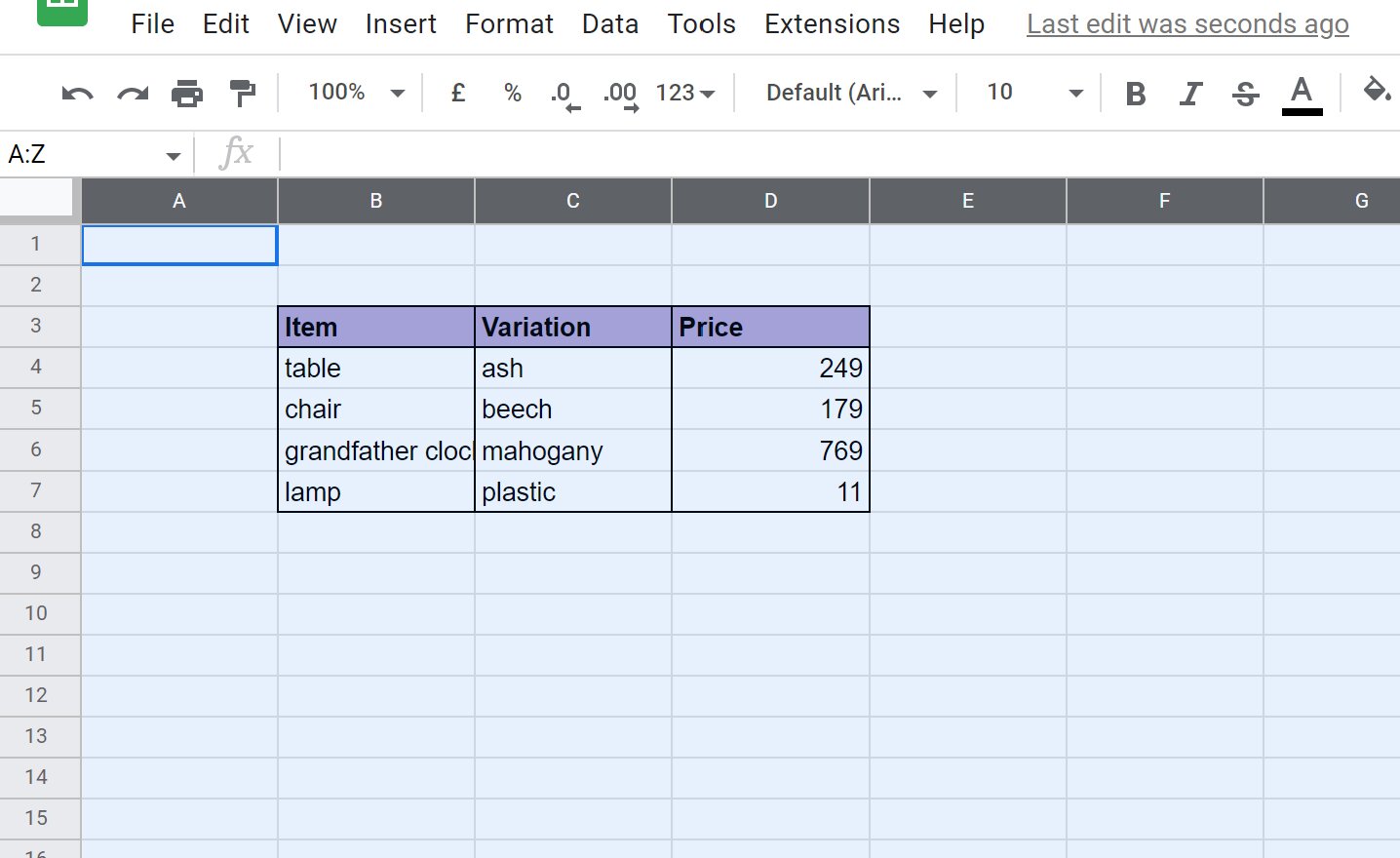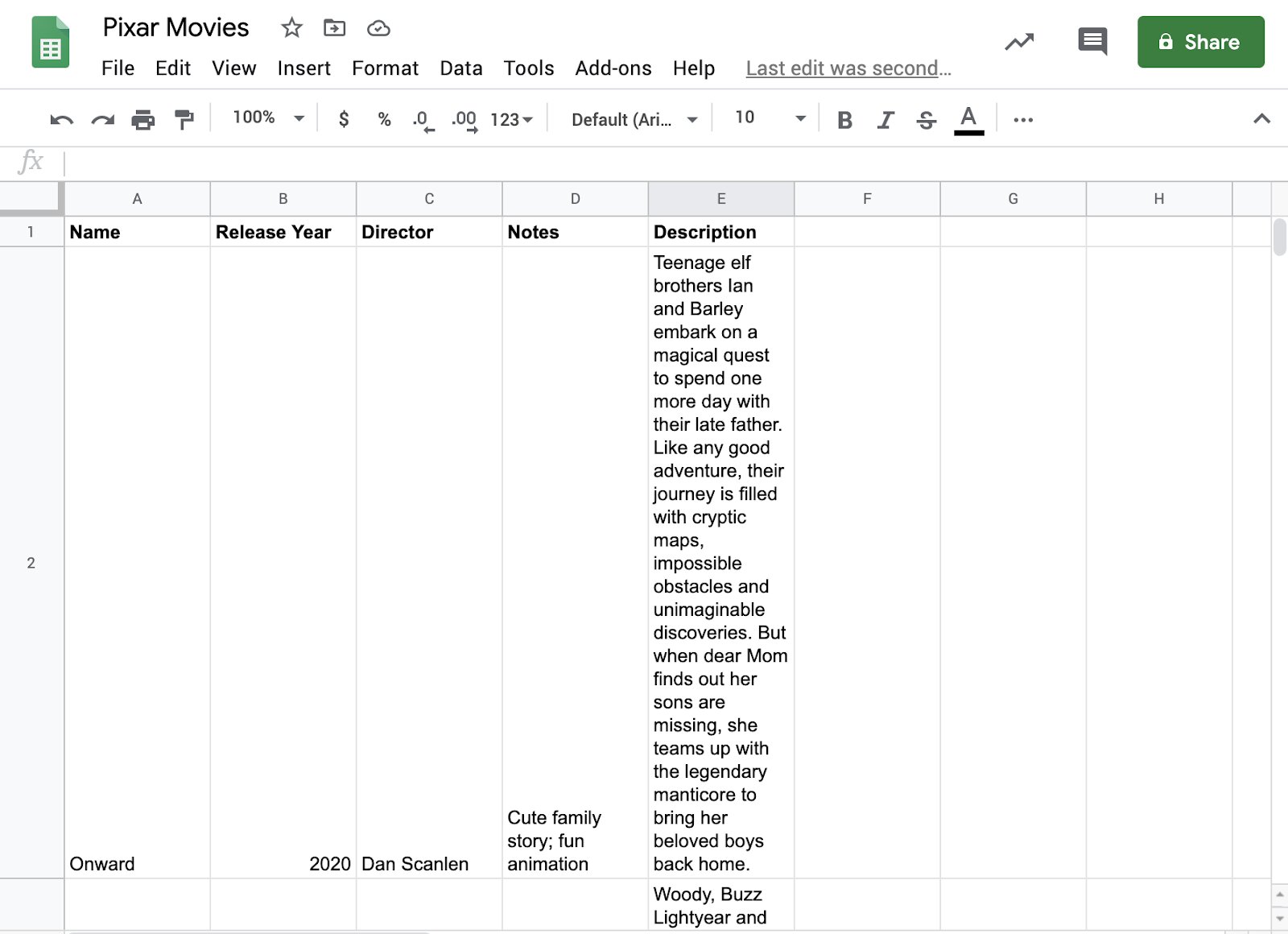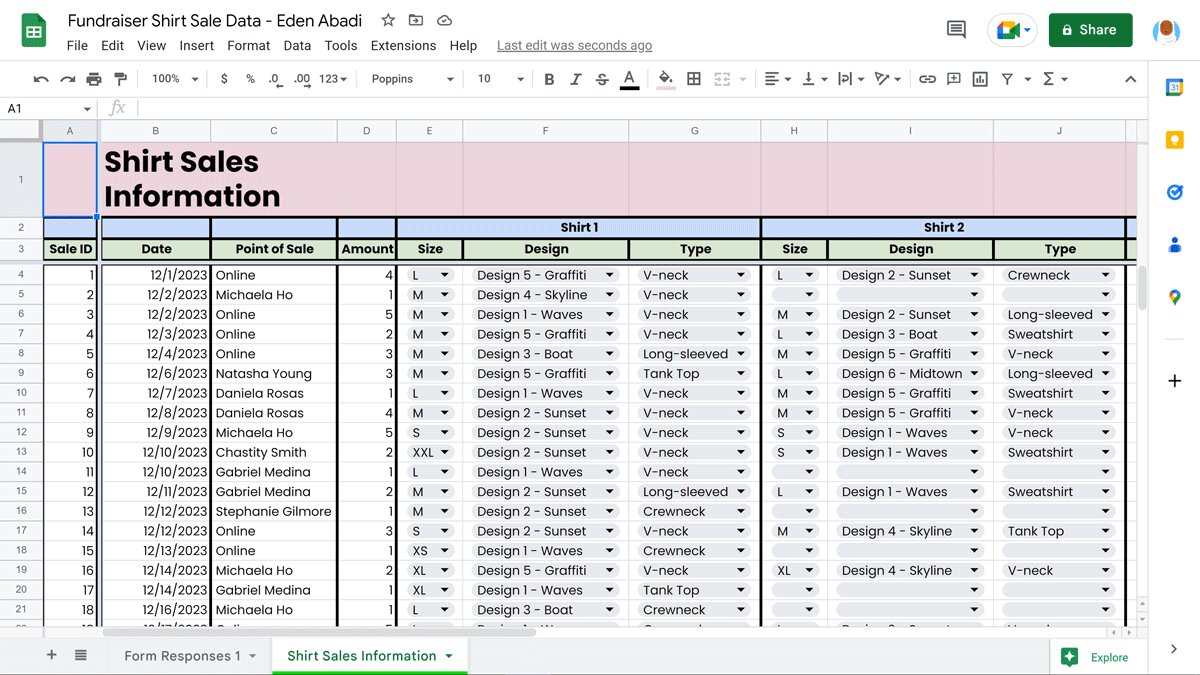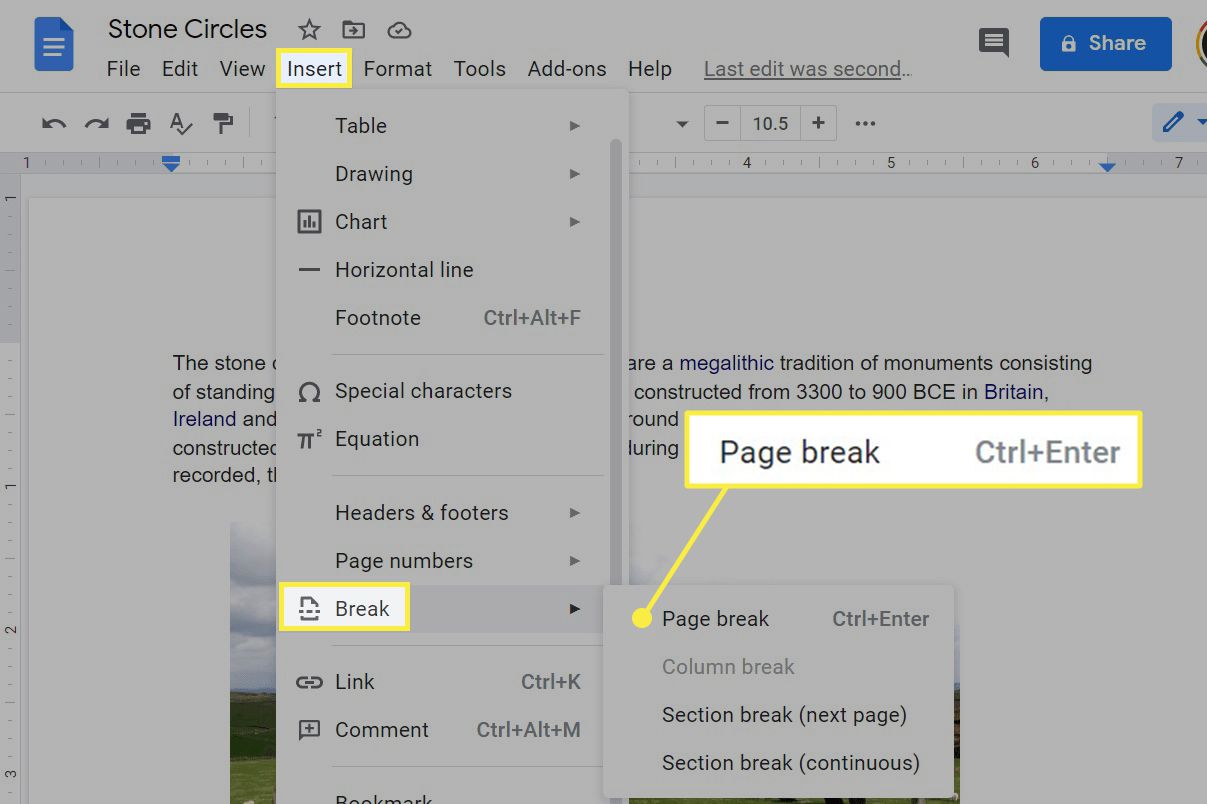Introduction
Google Sheets is a powerful and versatile tool for managing data, creating spreadsheets, and collaborating with others. Whether you’re using it for work, school, or personal projects, it’s important to understand how to efficiently clear the contents of cells, ranges, or even entire sheets in Google Sheets.
Clearing the contents of cells allows you to remove any values, formulas, or formatting within them, without deleting the cells themselves. This can be particularly useful when you want to start with a clean slate or update the data in your spreadsheet. However, it’s essential to know the proper techniques and shortcuts to clear the contents effectively, without impacting the structure or other data in your sheet.
Throughout this guide, we will explore different methods to clear contents in Google Sheets, ranging from clearing contents in a single cell to clearing contents in an entire sheet. We will also discuss the distinction between clearing contents and deleting cells, providing you with a comprehensive understanding of when and how to use each option.
Additionally, we will share some valuable tips and tricks to help you clear contents efficiently, saving you time and effort while managing your spreadsheets. By the end of this guide, you’ll have a solid foundation in clearing contents and be equipped with the knowledge to effectively manage your data in Google Sheets.
Understanding the Importance of Clearing Contents
When working with spreadsheets in Google Sheets, it is essential to understand the importance of clearing contents. Clearing contents allows you to remove existing data, formulas, or formatting from cells while preserving the cell structure and overall sheet layout. Here are a few key reasons why clearing contents is crucial:
- Updating Data: Clearing contents in specific cells or ranges allows you to update or replace existing data easily. By removing the current contents, you can input new values or formulas without the risk of carrying over any outdated or incorrect information.
- Starting Fresh: Clearing contents provides a clean slate for your spreadsheet. When beginning a new project or analyzing new data, it is often beneficial to clear existing contents and start with an empty sheet. Starting fresh allows you to focus solely on the new data without any interference from previous information or formulas.
- Removing Formatting: Clearing contents is an effective way to remove any formatting applied to cells. This is particularly useful when you want to revert cells back to their default formatting or remove any conditional formatting rules that may have been applied.
- Correcting Errors: If you’ve made errors in your data entry or formula calculations, clearing contents allows you to quickly rectify those mistakes. Instead of manually editing each cell, clearing the contents allows you to input the correct values or formulas in a more efficient manner.
- Collaboration and Sharing: When collaborating with others on a spreadsheet, there may be instances where clearing contents becomes necessary. If you need to remove sensitive data or start a collaborative project from scratch, clearing contents ensures that all participants have an accurate and up-to-date version of the sheet.
Overall, understanding the importance of clearing contents empowers you to maintain accurate data, make corrections with ease, and optimize your spreadsheet for collaboration. Now that we’ve explored the significance of clearing contents, let’s dive into the various methods you can use to clear contents in Google Sheets.
Clearing Contents in a Single Cell
Clearing the contents of a single cell in Google Sheets is a straightforward process. This method is useful when you want to remove the data, formula, or formatting from a specific cell without affecting other cells in the sheet. Here is how you can clear the contents in a single cell:
- Select the cell you want to clear by clicking on it.
- Press the Delete key on your keyboard. Alternatively, you can right-click on the selected cell and choose “Clear content” from the context menu.
- The contents of the selected cell will be removed, including any values, formulas, or formatting.
- The cell will remain in its original location, with the cell structure intact.
It’s important to note that clearing the contents of a cell does not delete the cell itself. The cell will still be present in the sheet, and any neighboring cells or formulas referencing it will remain unaffected.
Additionally, you can use shortcuts to clear the contents of a single cell without using the context menu. For example, on Windows, you can use the shortcut Ctrl+Backspace, and on Mac, you can use Command+Delete. These shortcuts provide a quick and convenient way to clear the contents of a selected cell.
Clearing the contents of a single cell allows you to update or remove data within that specific cell while maintaining the integrity of the surrounding cells and the overall structure of the sheet. Now, let’s explore how to clear the contents in a range of cells in Google Sheets.
Clearing Contents in a Range of Cells
When you need to clear the contents of multiple cells in Google Sheets, clearing a range of cells is the most efficient method. This allows you to remove data, formulas, or formatting from a group of cells simultaneously, saving you time and effort. Here’s how you can clear the contents in a range of cells:
- Select the range of cells you want to clear. You can do this by clicking and dragging your cursor over the desired cells.
- Right-click on the selected range and choose “Clear content” from the context menu.
- All the contents within the selected range, including values, formulas, and formatting, will be removed.
- The cell structure and formatting of the selected range will remain unchanged.
Alternatively, you can use the Clear option from the Edit menu in the toolbar. This provides another way to clear the contents of a selected range of cells.
Clearing the contents in a range of cells is particularly useful when you want to update or replace a bulk of data in your spreadsheet. It allows you to remove outdated or incorrect information from multiple cells at once, providing a seamless way to refresh your data.
Just like clearing the contents in a single cell, clearing a range of cells does not delete the cells themselves. The cell structure and neighboring cells will remain intact, ensuring that any formulas or references to the cleared cells are preserved.
Now that you know how to clear the contents in a single cell and a range of cells, let’s explore how to clear the contents in an entire sheet.
Clearing Contents in an Entire Sheet
At times, you may find it necessary to clear the contents of an entire sheet in Google Sheets. This allows you to start fresh with a blank slate, clearing all data, formulas, and formatting from every cell in the sheet. Here’s how you can clear the contents in an entire sheet:
- Click on the first cell in the sheet, often referred to as cell A1.
- Press Ctrl+A (or Command+A on Mac) to select the entire sheet.
- Right-click on any of the selected cells and choose “Clear content” from the context menu.
- All the contents within the sheet, including values, formulas, and formatting, will be removed.
- The cell structure and formatting of the sheet will remain unchanged.
Alternatively, you can use the Edit menu and select the Clear option, followed by All. This will achieve the same result of clearing the contents in the entire sheet.
Clearing the contents in an entire sheet provides a clean canvas for a new project or data analysis. It removes all existing information, allowing you to start from scratch without any interference from previous data or formulas.
It’s important to note that clearing the contents in an entire sheet does not delete the sheet itself. The sheet remains in your file, ready for you to populate with new data or content.
Now that you know how to clear the contents in a single cell, a range of cells, and an entire sheet, let’s explore some useful shortcuts to expedite the process of clearing contents in Google Sheets.
Using Shortcuts to Clear Contents
Google Sheets offers a variety of keyboard shortcuts that can streamline your workflow and make the process of clearing contents even faster. Here are some useful shortcuts you can use to clear contents in Google Sheets:
- Clear Contents in a Single Cell: To clear the contents of a single cell, simply select the cell and press the Delete key on your keyboard. Alternatively, use the shortcut Ctrl+Backspace on Windows or Command+Delete on Mac.
- Clear Contents in a Range of Cells: To clear the contents of a range of cells, select the cells and right-click to access the context menu. From there, choose “Clear content” to remove the contents. You can also use the shortcut Ctrl+Alt+Backspace on Windows or Command+Option+Delete on Mac.
- Clear Contents in an Entire Sheet: To clear the contents of an entire sheet, click on the first cell (A1), then press Ctrl+A (or Command+A on Mac) to select the entire sheet. Right-click on any of the selected cells and choose “Clear content” from the context menu. Alternatively, you can use the shortcut Ctrl+Shift+Backspace on Windows or Command+Shift+Delete on Mac.
These shortcuts provide a quick and efficient way to clear contents without the need to navigate through menus or use the mouse extensively. Incorporating these shortcuts into your workflow can significantly speed up the process of clearing contents in Google Sheets.
It’s worth noting that these shortcuts are just a few examples of the many shortcuts available in Google Sheets. If you’re looking to further optimize your workflow, consider exploring other shortcuts and customizing them to suit your needs.
Now that you’re equipped with shortcuts to clear contents in Google Sheets, let’s delve into the distinction between clearing contents and deleting cells.
Clearing Contents vs Deleting Cells
When working with data in Google Sheets, it’s important to understand the difference between clearing contents and deleting cells. While both actions involve removing information from the sheet, they serve different purposes and have distinct outcomes. Here’s a breakdown of the key differences:
Clearing Contents: Clearing contents involves removing the data, formulas, or formatting within a cell without deleting the cell itself. When you clear the contents of a cell, the cell structure remains intact, allowing you to input new data or formulas into the cell. Clearing contents is useful when you want to update or replace the existing information while preserving the cell’s position and properties within the sheet.
Deleting Cells: Deleting cells, on the other hand, involves removing the entire cell, including its contents, formatting, and its position within the sheet. This action can shift neighboring cells and impact the overall structure of the sheet. Deleting cells is typically used when you want to remove unnecessary or unwanted cells from the sheet entirely, such as when adjusting the layout or removing excess rows or columns.
It’s essential to be cautious when deleting cells, as it can have unintended consequences on formulas and references in other parts of the sheet. Deleting cells may cause formulas to break or lead to errors in calculations if they reference the deleted cells. Therefore, it’s recommended to carefully review your formulas and make any necessary adjustments after deleting cells.
Clearing contents and deleting cells serve different purposes. Clearing contents allows you to update or replace specific information within a cell or range of cells while maintaining the structure of the sheet. On the other hand, deleting cells is more suitable when you want to remove cells entirely, impacting the layout and formulas in the sheet.
Now that we have a clear understanding of the distinction between clearing contents and deleting cells, let’s uncover some tips and tricks for effectively clearing contents in Google Sheets.
Tips and Tricks for Clearing Contents Efficiently
Clearing contents in Google Sheets can be a repetitive task, especially when dealing with large datasets or complex spreadsheets. To help you clear contents efficiently, consider implementing these tips and tricks:
- Use Range Selection: Instead of clearing contents one cell at a time, utilize range selection to select multiple cells or entire columns/rows. This allows you to clear contents in bulk, saving time and effort.
- Utilize Keyboard Shortcuts: Take advantage of keyboard shortcuts to expedite the process of clearing contents. Refer to the previous section to learn useful shortcuts for clearing contents in single cells, ranges, and entire sheets.
- Use AutoFill to Extend Clearing: If you need to clear contents in a continuous range of cells, use the AutoFill feature. Clear the contents of the first cell, then click and drag the fill handle (the small square in the bottom-right corner of the selected cell) to extend the clearing to adjacent cells.
- Combine Clearing and Formatting: If you want to clear contents and apply formatting simultaneously, use the “Clear format” option. This removes the contents and any formatting, allowing you to start fresh with a consistent format.
- Undo and Redo: If you accidentally clear contents or make a mistake, utilize the Undo shortcut (Ctrl+Z or Command+Z) to revert the action. Similarly, the Redo shortcut (Ctrl+Y or Command+Y) can be used to restore a previously undone clearing action.
- Make Use of Conditional Formatting: If you have conditional formatting rules applied to your sheet, consider clearing or modifying the rules to suit your specific needs. This ensures that the formatting aligns with the cleared contents and any new data you input.
By implementing these tips and tricks, you can streamline the process of clearing contents in Google Sheets, saving time and improving efficiency. Remember to utilize shortcuts, range selection, and other features to customize the clearing process according to your requirements.
Now that we’ve explored various techniques for clearing contents efficiently, let’s wrap up this guide.
Conclusion
Clearing contents in Google Sheets is an essential skill for managing data, updating information, and maintaining accurate spreadsheets. By understanding the various methods to clear contents in a single cell, a range of cells, or an entire sheet, you can efficiently refresh your data without compromising the overall structure of your sheet.
Remember to leverage keyboard shortcuts to expedite the clearing process, utilize range selection for bulk clearing, and combine formatting and clearing actions where necessary. These tips and tricks will help you save time and effort while working with your spreadsheets in Google Sheets.
It’s crucial to differentiate between clearing contents and deleting cells, as their purposes and outcomes are distinct. Clearing contents preserves the cell structure and allows for updates and replacements, while deleting cells permanently removes them from the sheet, potentially disrupting formulas and references.
Keep in mind that clearing contents allows you to start fresh, update data, correct errors, and facilitate collaboration, while preserving the underlying structure and formatting of your sheet.
By incorporating these techniques and best practices, you can become proficient in efficiently clearing contents in Google Sheets, making your data management tasks more streamlined and effective.
Now that you have a comprehensive understanding of clearing contents in Google Sheets, go ahead and put this knowledge into practice. Explore the various methods, experiment with shortcuts, and find the most efficient workflows that suit your specific needs.
Happy clearing!







